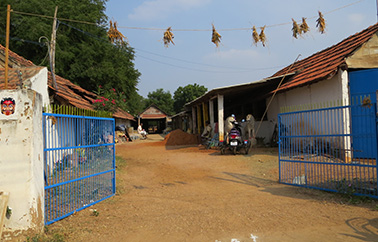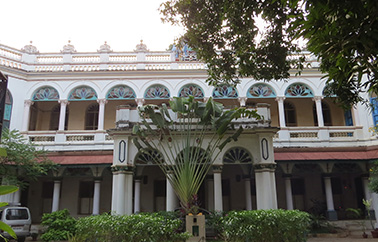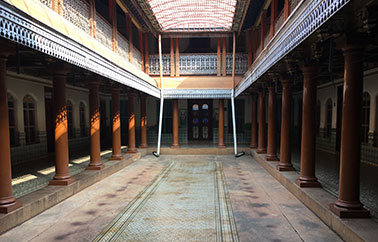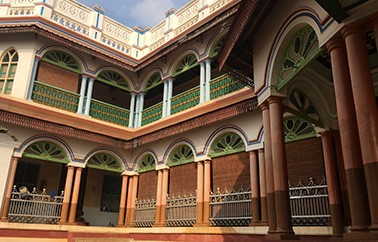Chettinadu -
Of mansions and
tiles
The story of Chettinadu is closely associated with shrewd merchants called Chettiars who once upon a time ruled over half of Burma. Although there are many theories surrounding their history, it is believed that they have been around since the times of the Cholas in 2nd century AD. Their mansions are in the true sense magnificent; adorned with exquisite chandeliers from Belgium, ornate wooden doors of Burmese wood, colorful handmade tiles, terracotta roofs and colorful glasses shipped form Europe for the windows. The Chettiars were (and still are) considered to be a close knit community where joint family system was custom and families were not limited to 2 kids back then. It is believed while the menfolk went off for trading to far off lands; only 1 male member remained at home at all times taking care of the women folk. A typical Chettinadu house has 2 courtyards surrounded by small rooms (some mansions have up to 80 rooms) where families stored their belongings and mysteriously, not a single one of them was a bedroom!
The present day region of Chettinadu is a charming mix of neat lanes fringed by these ostentatious mansions, some dilapidated, some under lock and key and yet some that retain their glory of yesteryears. During my stay at Visalam, a simple mansion gifted by a doting father to his daughter now converted to a hotel, in the heart of the charming Kanadukatha Village, I visited the most interesting Athangudi tiles making unit. My question was how did it come to be?? While the Chettiars imported tiles from Europe, they found it hard to find a replacement after much wear and tear, and hence this cottage industry was set up to replicate the manufacturing of imported tiles. The only difference being it is not mass manufactured in factories, but handmade and colorful.
As we entered the tile making unit which was a 20 minute drive, I was escorted to a bench set right by an artisan to have a close look at the technique of making this tile. After we exchanged a few pleasantries, he picked up a readymade glass frame casing, dropped a few dollops of paint in shades of red, green and yellow and used a thick stylo to create a design. He then packed it with a mixture of burnt and glazed clay (sourced from this region) mixed with white cement and Voila! It was ready to be kept out in the sun to dry before being set in water for curing which takes about a weeks’ time. In that period of 15 minutes he made at least 7 to 8 tiles, it was like second nature and something he could probably do with his eyes closed. He offered me to try and get creative at which I failed miserably and ended up doing one of the designs he did. This, I believe to be a very unique activity which is rare to find elsewhere, that too at a mere INR 200 as tip for the artisan (of course you can pay more if you like).
The beauty of these tiles is, I am told, they age very gracefully and tend to gain their sheen with use. And this can be witnessed at the mansions one visits in the region. As a traditional handicraft handed down from generations, this is an authentic experience definitely not to be missed when in Chettinadu, maybe even take home a tile as a wall hanging to adorn your wall.



